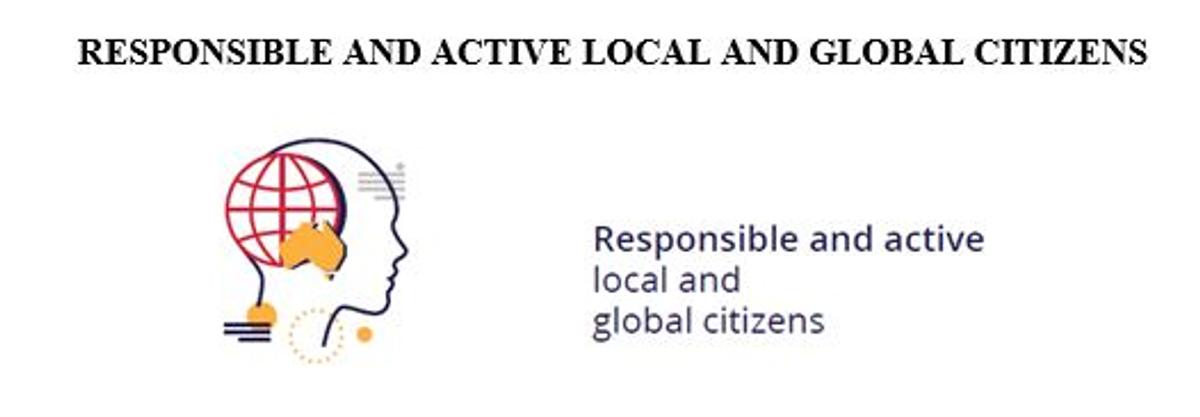MFG Traits: Overview example 2
This year one of our goals as a group of teachers will be to develop an overview that describes each of our 11 MFG traits. Each of our teachers, as part of their Performance and Development Plans, is incorporating one or more of our traits into their teaching.
Below is another example of an overview of one of the traits.
RESPONSIBLE AND ACTIVE LOCAL AND GLOBAL CITIZENS
What is this trait and what does it look like in action?
Being a local citizen involves understanding our own culture
- We are knowledgeable about selves, our own culture and how we view the world through our own cultural lens
- To be able to participate and negotiate with people requires us to know and understand our culture, another’s culture and have skill in working between our own and another’s culture
Being an active global citizen involves developing the capacity to understand issues of global significance
- We are curious and engaged in the world
- We are able to investigate the world beyond our immediate surroundings
- We try to understand our own and others’ cultural perspectives
- We come to understand and take different perspectives by listening to and writing stories
Being a global citizen requires flexibility and curiosity
- We are what we expect to encounter when we interact with a certain culture
- This flexibility can subsequently lead to increased cultural curiosity and awareness and thereby improve intercultural relationships.
Developing global competence requires cultivating global thinking habits
- We inquire about the world by engaging with questions, explore local-global connections and seek information beyond familiar environments
- We try to understand multiple perspectives – others’ and our own – by considering cultural contexts, resisting stereotypes and valuing our shared human dignity
- We practise respectful dialogue by communicating across differences, listening generously and sharing courageously
- We take responsible action by being inclined to see and frame opportunities to improve conditions, collaborating with others and mobilising ourselves to act
Being an active local or global citizen can take a number of forms:
- Volunteering
- Link classroom learning with community organisations
- Student curiosity about others cultures
- Students leading change within a community
- Using community members as resources for learning
- Teacher prompting (What could you do? What is your role? How could you get involved? How could you help? How can you be a leader?)
Strategies and Techniques that our teachers use to develop this trait include:
- Use classroom displays
- Promote local/global initiatives (48Hr Famine)
- Volunteering opportunities (St John Ambulance, CFA, Life Saving, Community Garden)
- Global Fundraising promotions (Shave for a Cure, Relay for Life)
- National and international trips
- Sister School relationships
- Diversity Team (Diversity Week school activities – dancing, food, dress…)
- Weekly Quiz (international news)
- Sorry Week
- Highlight Indigenous experience in Australia stories
- Sustainability Initiatives (how does local involvement connect to global impact? i.e. Boomerang Bags)
- Linking teaching in with current world events
- Link teaching with local issues and finding solutions
Thinking Routines:
- ‘See, think, wonder’ and ‘See, wonder, connect x2’ thinking routines
- ‘Think, Puzzle, Explore’ routine
- ‘Walk the week’ thinking routine
- ‘I wonder…’ questions
- ‘Question starts’ routine
- Concept Map using the GSCE (Generate/Sort/Connect/Elaborate) approach
- ‘I used to think…now I think’
Marzano Strategies
Resources and Sources
Dylan Wiliam’s Formative Assessment Strategies
Project Zero Creative Visible Thinking Strategies


